Growing Potatoes
The 'umble spud is one of the top three most popular vegetables. Growing potatoes and of course eating them is a breeze due to their versatility.
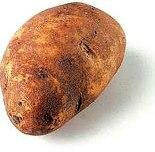
Boil 'em, mash 'em, fry 'em, bake 'em. It's hard to go wrong with this 'tater staple in the diet.
Now they’re NOT one of those vegetables whereby you skip gaily out to your garden and pop a freshly picked spud into your mouth...
Rather, as you hold your own earthy home grown potatoes in your hands, they seem to reek of heartiness and nourishment, imparting a divine influence on the body and soul... umm, so satisfying.
Containing many vitamins and minerals, most of the goodness and fibre is in the skin or just beneath the skin's surface, so try to keep at least some of the skin intact — a good scrub is fine. Now I bet you can't wait to know. . . .
How to grow potatoes
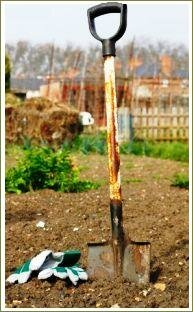
Planting your Potatoes
Planting: If you're a beginner, it's recommended to purchase seed potatoes from a nursery. These will be guaranteed disease-free and known to give good crops. You CAN use potatoes from the supermarket, but seed potatoes usually give larger and more disease resistant yields.
You can 'chit' them first (allowing them to sprout) before planting, simply by putting them in a sunny spot.
Either place your seed potatoes directly on the ground about 30cm (12-14") apart. Cover them with a 50/50 blend of straw with old manure, blood and bone and compost. Water generously.
Or, dig a shallow trench about a foot deep and place spuds along the bottom of the trench. Cover with compost or a good mix as above of straw etc.
In a couple of weeks, the tops will emerge through the straw or compost. As they grow, keep topping them up with the enriched straw blend or more compost, making sure the tubers don't get exposed to sunlight. This can turn them green and make them toxic.
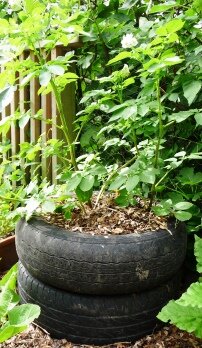
Other ways of planting potatoes are in tyres/tires, mesh cages or any container that can hold the spuds and mounded up compost/straw.
Sowing your Potatoes
It's highly rewarding growing potatoes from seed, but it takes patience. The reward is that you will end up with a superior variety which will be perfectly suited to your particular environment.First save seeds from your best plants (The small tomato-like fruits formed after flowering). See Saving & Storing Seeds. Sow these seeds next season about 30cm (12-14") apart and twice their size deep.
Your first year will likely produce different varieties because of cross pollination of the seed you saved. You might get a winner, you might get small duds. Disease and bugs may attack, so discard these plants, you want to produce resistant, tasty, and high yielding plant varieties.
Go through this process each year, saving seed from the most successful plant(s) only, until you consistently get the same top quality potatoes each time. This may take one or a few years, but it's worth it, because you will have beaten the diseases and beetles with a resistant, tasty, robust king of spuds!
You can of course control you own breeding program and cross pollinate in a greenhouse away from outside pollinators such as the bees.
Harvesting Potatoes
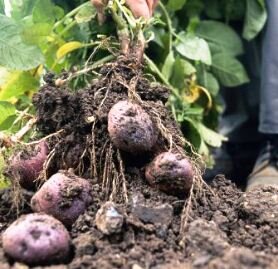
Potatoes take 14-18 weeks to mature, depending on whether you planted seed spuds or sowed seeds. When they flower, they are getting close to maturity. When the plants begin to die back and yellow, the crop is ready for harvest.
The beauty with growing potatoes under a straw mat is that you take the guess work out of the growing. You can actually lift the corner of the straw and see your potatoes developing.
When you are close to harvest, you simply pull out some of the bigger ones for early eating, without killing off the plant.
On the ground, in your no dig garden bed or inside an old tyre (for containment) potatoes will grow anywhere given the right conditions.
Whack some in. Very satisfying gardening!
Potato varieties
There are dozens of types of potatoes you can grow. Some are small with waxy flesh, others are large with floury white flesh, and there is everything in between. What you grow will depend largely on how you like to eat them. Not all potatoes are created equal. Some are better for boiling and some for baking.
Baking Potatoes: Baking potatoes are those higher in starch than others. They generally have a coarse skin and a firm flesh. These are best for baking, mashing and frying. They are light and fluffy inside once cooked and are just brilliant.
It's impossible to name all of the types, but some examples of good baking varieties are Russet (see photo at the top of page), Goldrush, Idaho, Bintje and Norgold.
Boiling Potatoes: Boiling potatoes typically have less starch and higher sugar content. This means they will hold together when boiled or used in soups, casseroles and salads.
Some good examples of boiling varieties include Red Potato, La Soda, Bismark, King Edward, Sequoia, Bronwell and Pontiac.
Those that fall in the middle, the all-rounders, include Kennebec, Yukon Gold and Sebago.

POTATO E-BOOK
Exact Step-by-Step Growing System for Potatoes. Experts at hand!
All gardeners have their own way (and opinion) on potato growing; when to plant potatoes, how to control potato pests, potato diseases, and of course the best potato varieties.
It's a huge subject. I know what works for me, but not for other gardeners in different situations. So I believe that the best way to show our respect for these deceptively basic household workhorses is to cover the field and get experts on the job.
Rather than me bend your ear, I have found, and now avidly follow and recommend a true storehouse of every bit of information you will ever need to know about growing potatoes. — written by a world renowned horticultural expert who trains the professional crop growers. CLICK HERE TO LOOK
Starting from the history and right up to the present day growing of potatoes, this treasure trove of every potato grower's dream has it all, and it's not short of ideas for eating them too, I can vouch for that!
How to Grow Great Potatoes is a beautifully designed 105 page ebook. It contains over 120 color photos and covers everything for novice and experienced gardeners.
It includes detailed variety information, planting, cultivation, disease, pest control, nutrition, harvesting and a rather handy comprehensive list of certified seed suppliers for many locations.
There are two popular high value bonuses also — an exclusive ebook on How to Grow Jerusalem Artichokes and a Potato Cookbook.
This is my recommendation for this product, and where to buy from. I hope you will do what I do; save money, be organic and enjoy the superior taste of home grown produce. Like the Growing Tomatoes book, readers love to send me in their success stories and photos of their bumper spud crops. Click here to read for yourself, and if you purchase through this link, you'll help support this site so I can do more reviews on gardening products.
You'll need other vegetables to eat with your spuds, so check back to List of Vegetables

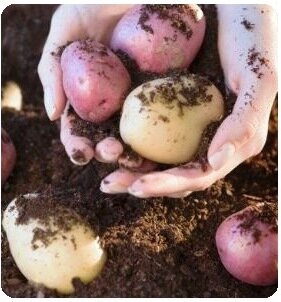 Click to find out how.
Click to find out how.